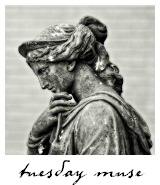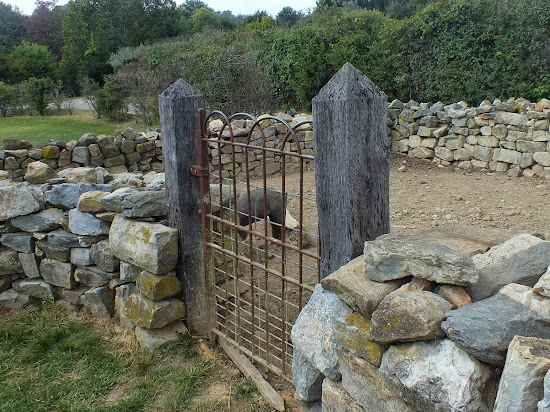(click on photo to enlarge)
(click on photo to enlarge)
This is the Riddlebarger farm. It was moved from Eagle Rock, Botetourt County to the museum.
You can read about life on the farm
HERE.
The other day a friend of mine was telling me that her husband farms the land that the Riddlebarger farm once was. His grandmother was friends with Mrs. Riddlebarger who once lived in this home. Upon further investigation on some history of this home (you know me, ha!), I found
THIS ARTICLE and found it interesting that one of the names listed was the family name of my friend's husband. It always surprises me what a small world it is over here in my area!
My husband works with a Riddlebarger and he was telling our interpreter that and was wondering outloud if they were related and she said "Probably, there are a passel of them in the area"! She was an elderly woman, acting out the role of the lady of the house. Loved her!
Friday Fences
Random 5's
1) I'm not liking how dark it is when I get up in the mornings now. Not excited either for the time change. I love daylight savings.
2) Last night on my way to Kroger to pick Christian up from work, Ashlyn called me and asked if I could pick up some patches for her work pants. Ozzy had jumped up on her and ripped the leg. I bought patches and a few other things and got home with no patches. Christian and I jumped back in the car and headed back for Kroger. I parked along the curb as he went in. A woman then comes across the parking lot carrying a small pet carrier. I'm wondering what she was doing. She plopped the carrier into a shopping cart and opened the door and pulled out a cat. Put the carrier on the bottom part of the cart and let the cat sit in the upper part of the cart. Then she heads for the doors. But she passed the doors and kept walking and petting and singing to the cat. Then next thing I know, she climbs up on a display of charcoal bags and sits the cat so it can look into the store. She's laying upon the top of charcoal, holding her cat to the store window. At that time, Christian came out so we left. I believe she truly was the "Crazy Cat Lady"! I did feel a bit sorry for her though.
3) Went to edit a picture last night using picassa. I clicked on the photo editor, which usually takes you to Google's Picnik. Not anymore. Says they no longer use the editor but says that you can now edit in Google+ with their "powerful editing tools"....clicked the link to take me there and didn't see anywhere to edit. And wasn't it just last year that they bought Picnik and ticked us all off? I'm tired of the ever changing Google. Even their searches are just paid for now instead of relevant. But....I still "Google" everything lol
4) Football tomorrow. The boys played Salem on Tuesday. Salem is known for their sports teams. We tied, 32-32! It was a great game. Braden had an excellent night catching pass after pass, even scored a TD once. Dalton just didn't seem to be anywhere near the action so I hope he has a better game tomorrow!
5) Tomorrow is also
Olde Salem Days. Will be heading there after football. It is also our Anniversary. 28 years! I've shown you a wedding pic before
RIGHT HERE. Later tomorrow, Braden and Dalton have a birthday party to go to. A local
TAP HOUSE just opened so we'll be able to drop the boys off at the party and head around the corner and have a drink and dinner and try the place out!
Have a great weekend!!
















































